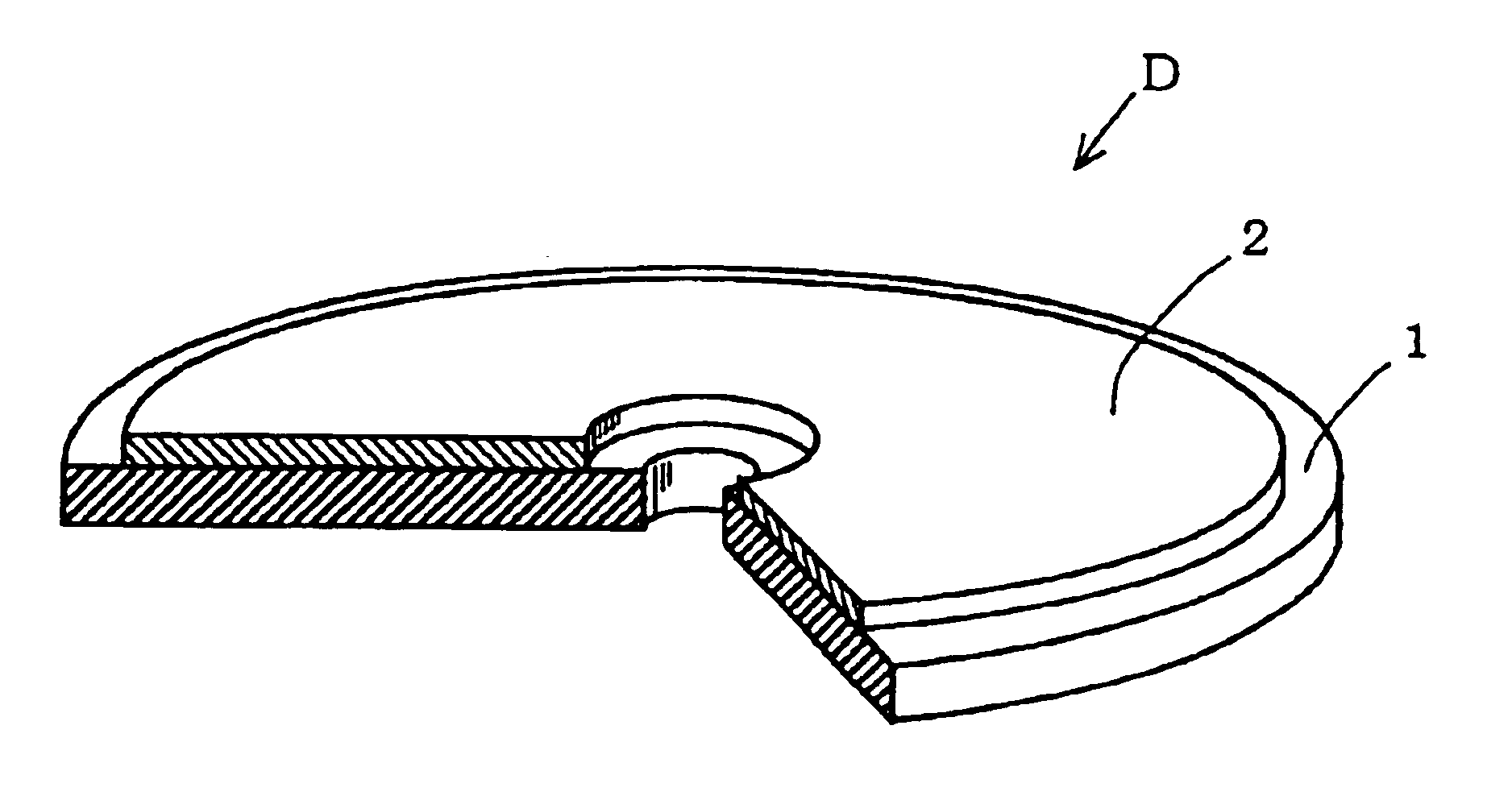Glass material for a substrate, glass substrate, and information recording medium employing the same
a technology of glass substrate and information recording medium, which is applied in the direction of magnetic materials for record carriers, instruments, record information storage, etc., can solve the problems of insufficient hardness, inability to withstand high temperature, and inability to withstand high temperature, and achieve high linear thermal expansion coefficient, low alkali elution, and high rigidity.
- Summary
- Abstract
- Description
- Claims
- Application Information
AI Technical Summary
Benefits of technology
Problems solved by technology
Method used
Image
Examples
examples 1 to 59
Practical Examples 1 to 59 and Comparative Examples 1 to 11
[0063]For each of various glass materials of different composition, which each correspond to one of Practical Examples 1 to 59 and Comparative Examples 1 to 11, a prescribed amount of raw material powder was weighed and put in a platinum crucible, was mixed, and then was melted at 1,550° C. in an electric furnace. When the material is melted sufficiently, stirring blades were put into the molten glass to stir it for about one hour. Thereafter, the stirring blades were taken out, then the molten glass was allowed to stand for 30 minutes, and then it was poured into a mold so as to be formed into a glass block. The glass block was then heated again to close to its glass transition point, and was then cooled slowly so as to be straightened. The glass block thus obtained was then sliced into a disk about 1.5 mm thick and 2.5 inches across, and was cut out using a cutter so as to have concentric inner and outer edges. The two fla...
PUM
| Property | Measurement | Unit |
|---|---|---|
| temperature | aaaaa | aaaaa |
| Ra | aaaaa | aaaaa |
| liquid phase temperature TL | aaaaa | aaaaa |
Abstract
Description
Claims
Application Information
 Login to View More
Login to View More - R&D
- Intellectual Property
- Life Sciences
- Materials
- Tech Scout
- Unparalleled Data Quality
- Higher Quality Content
- 60% Fewer Hallucinations
Browse by: Latest US Patents, China's latest patents, Technical Efficacy Thesaurus, Application Domain, Technology Topic, Popular Technical Reports.
© 2025 PatSnap. All rights reserved.Legal|Privacy policy|Modern Slavery Act Transparency Statement|Sitemap|About US| Contact US: help@patsnap.com


